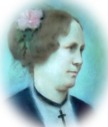Person Sheet

NameCyrus West Field
Birth30 Nov 1819, Stockbidge, MA
Death12 Jul 1892, Irvington-on-Hudson, NY
FatherDavid Dudley Field (1781-1867)
MotherSubmit Dickinson (1782-1861)
Misc. Notes
He was an entrepreneur, most noted as a pioneer in the telegraph industry. He was named after Cyrus Williams, President of the Housatonic Bank in Stockbridge, Massachusetts and Dr. Stephen West, his father’s predecessor in the pastorate at Stockbridge and was baptized May 28, 1820 at the Congregational Church in Stockbridge. At an age he would have normally entered college, he left Stockbridge for New York City, where he worked in A. T. Stewart’s Dry Good Store and learned the business trade, starting as an errand boy and working up to clerk. Five years later in 1840, he founded his own paper manufacturing business, which failed almost immediately. However, in 1843, he established, along with his brother-in-law, Joseph F. Stone, the successful paper making enterprise of Cyrus W. Field and Company. Ten years later, he retired a wealthy man at age 34 and took a 6 month trip to South America with Frederic Church. Through his brother, Matthew Field, he met Frederick Gisborne, who owned the Newfoundland Electric Telegraph Company. This led to his interest in telegraphy and on May 8, 1854 he helped establish the New York, Newfoundland and London Telegraph Company, along with the other men portrayed in Daniel Huntington’s painting “The Atlantic Cable Projectors”. Two years later, having secured the landing rights on the American side of the Atlantic Ocean, he, along with John W. Brett, approached Charles Bright in London, chief engineer of the Magnetic Telegraph Company, Dr. Edward Whitehouse and Samuel F. B. Morse to pursue a telegraph cable across the ocean, thus establishing the Atlantic Telegraph Company in December 1856. Cyrus supplied the energy and vision, but most of the money and ships and all of the cable came from England. In August 1857, the first attempt to lay a submarine cable across the Atlantic Ocean failed when the cable broke from the strain of applying brakes and a large wave swell. In June 1858, a second attempt was tried, but this too broke. The rest of that summer was spent successfully finding and splicing this cable together in mid-ocean and by August 1858, it was complete again. This first Trans-Atlantic telegraph cable system became official when Queen Victoria sent President James Buchanan a message in Morse code. However, it went dead a month later in September due to another break, having transmitted only 400 messages. By 1864, he had raised enough money to finance yet another laying of the cable and the next year, the attempt was made, but the cable broke once more. Finding more funds and trying once again, the cable was finally successfully laid from Heart’s Content in Newfoundland to Valentia Island, Ireland on July 27, 1866. In addition, the 1865 cable was grappled and later recovered in 1866, giving the world two cables for sending messages across the Atlantic Ocean. Later he was also a promoter of a submarine telegraph cable between the United States and Australia and Asia by way of Hawaii. He received numerous awards for his work, including a gold medal presented by the United States Congress, the Grand Medal from the French Exposition of 1867, a honorary doctor of law degree from Williams College in Williamstown, Massachusetts and the naming of Mount Field in British Columbia in 1883. By 1877, he bought an interest in the New York Elevated Railroad Company, becoming its President and controlling the Third and Ninth Avenue lines. In 1879, he financed New York City’s first skyscraper, the Washington Building. He also owned two New York City newspapers, “Evening Express” and “Mail”, which were later merged into “Mail and Express” and in 1881 he was one of the directors for the new Tarrytown National Bank in Tarrytown, New York. Upon the assassination attempt on President Garfield in June 1881, he sought to raise funds for the President’s wife and children should the President die. He contributed $5,000 and a total of $360,000 was raised and given to President Garfield‘s widow after the President died in September. In 1885 he invested heavily in the commodity market, but also lost heavily when that market failed in June 1887. He had to sell much of his property in Irvington, New York and received loans from friends. He was married on December 2, 1840 to Mary Bryan Stone. They had seven children between 1841 and 1857. On a passport request in 1856, he was described as 5 feet 11 inches tall, high forehead, blue eyes, Roman nose, medium mouth, angular chin, brown hair, fair complexion and oval face. Other sources state that he had red hair. (bio by: Diane Gravlee)
Spouses

1Mary Bryan Stone
Birth28 Aug 1817, Guilford, CT
Death23 Nov 1891, Dobbs Ferry, NY
Marriage2 Dec 1840, Guilford, CT
ChildrenMary Grace (1841-1892)
Alice Durand (1843-1900)
Isabella (1846-1930)
Arthur Stone (Died as Child) (1850-1854)
Edward Morse (1855-1930)
Cyrus William (1857-1894)